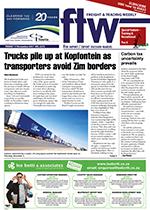The changing structure of South Africa’s labour market means the country is unlikely to see any reduction in its high levels of unemployment. This is one of the key findings of the Fast Facts report published last week by the Institute for Race Relations (IRR), showing that South Africa has shifted from having an economy based on mining and manufacturing to one based on skills and services. In 1990, mining and manufacturing accounted for 12.9% and 28.7% of formal employment respectively. In 2017, mining accounts for 4.9% and manufacturing 12.3%, while jobs in the more skilled sectors of finance (22.6%), trade (21.8%) and community, social and government services (26.9%) account for the bulk of South Africa’s formal employment. “This is particularly worrying as the change in structure means that there is no longer a large low and semi-skilled sector capable of absorbing the bulk of the labour force lacking the skills and education to find jobs in the skilled sector,” said IRR analyst Gabriela Mackay. She pointed out that South Africa’s economy was not only hampered by a low demand for commodities, but also the combined impact of poor policies and frequent cabinet reshuffles, which together have resulted in the loss of investor capital and, thus, the scope for creating jobs. “It is unlikely that there will be any improvement, and we can expect to see a continuing trend of job shedding and increasing unemployment rates,” said Mackay. She added that currently education was the key factor with the absorption rate being the highest for those with a tertiary education (75.6%) while for those with matric it is 50.3%. “Another worrying trend in the report is that South Africa’s overall labour force absorption remains low at 43.3%, with young black people being most affected by unemployment,” said Mackay.
.PNG)

